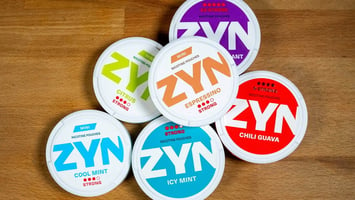Broughton welcomes the US Food and Drug Administration’s (FDA) decision to authorize ZYN nicotine pouches for sale. This critical milestone underscores the importance of science-based tobacco harm...
Takeaways from the Keller & Heckman E-Vapor and Tobacco Law Symposium
Nicotine
Feb 5, 2025 | Published by Chris Allen
Nicotine, Events
The Keller and Heckman LLP E-Vapor and Tobacco Law Symposium provided in-depth discussions on the regulatory landscape, the evolving challenges faced by the industry, and the potential changes ahead. As the first of two back-to-back events, this symposium set the stage for critical conversations about legal, regulatory and scientific issues in the reduced-risk nicotine sector.
A Strong Opening: Regulatory Landscape and Enforcement Challenges
Azim Chowdhury kicked off the symposium by delivering a comprehensive overview of the US regulatory journey that had led to the industry's current state. With the unfortunate removal of FDA's Brian King (Director of the Center for Tobacco Products) from the agenda due to the current communications freeze, Azim took the opportunity to provide an update on regulatory matters.
Key highlights of his presentation included:
- A breakdown of how the FDA gained authority over all nicotine products, including the deadlines that have shaped the US regulatory milestones.
- The rise of synthetic nicotine and how the FDA has had to adapt to a shifting market.
- A critical debunking of the myth that certain unauthorized products might still be legal—reinforcing that any product without authorization was, in fact, illegal.
- A clear articulation of the three legal pathways to market: PMTA (Premarket Tobacco Product Application), Substantial Equivalence, and Substantial Equivalence Exemption.
Azim also delved deeper into the evolving PMTA process, particularly the FDA's adjustments to its Acceptance criteria following the issuance of the PMTA Final Rule. A key takeaway was the importance of submitting amendments before substantive review, as the FDA is not obligated to accept changes once the review process has begun.
This session set the tone for the broader discussions that followed—specifically, the widening gap between regulatory intentions and market realities, leading to the proliferation of illegal products and ongoing litigation.
Emerging Trends: Nicotine Analogues and Market Disruptions
One of the more concerning topics discussed was the potential shift toward nicotine analogues—compounds designed to mimic the effect of nicotine while avoiding current regulatory frameworks. The example of 6-methyl nicotine was raised, and while there was not yet enough scientific evidence to confirm its efficacy or safety, concerns were voiced about companies viewing these analogues as a way to bypass existing regulations. Without prompt FDA intervention, this trend could introduce further complexities into an already turbulent industry.
Key Takeaways: Enforcement, Compliance, and the Future of Regulation
As the symposium concluded, a few critical themes emerged:
- Regulation is here to stay: There was no indication that regulatory oversight would lessen; rather, enforcement was expected to intensify.
- Industry shifts are on the horizon: With a new US administration set to take office in the near future, regulatory changes may be on the way.
- A new agency for harm reduction? One proposal gaining traction was the creation of an independent agency dedicated to overseeing reduced-risk nicotine products and harm-reduction strategies.
- Flavored product concerns remained unresolved: Despite enforcement efforts, the market for flavored nicotine products—most of which are illegal—continues to grow. A more structured, transparent PMTA pathway could encourage compliance and level the playing field. On a more positive note, the confirmation of FDA Marketing Granted Orders (MGOs) for Zyn pouches, including flavored variants, proves that there is a pathway that allows flavored reduced risk nicotine products to market.

Expert Insights on PMTAs, State Laws, and Consumer Behavior
Throughout the symposium, several expert speakers provided valuable perspectives on regulatory compliance, behavioral research, and market trends:
- Lillian Ortega (Director, WOW Solutions & former FDA official) emphasized the FDA's progress in enforcement but called for swifter action, particularly regarding illicit nicotine pouches.
- Dr. Christopher Russell presented compelling behavioral research showing high levels of switching to reduced-risk products among smokers who previously had no intention of quitting.
- Dr. Jessica Zdinak addressed the explosive growth of illicit nicotine pouches in the US market and the potential public health concerns tied to youth access. She also cautioned against the misconception that "STN only" submissions provide a legal pathway to market.
- Charlene Liu, ScD, MS provided a detailed analysis of the FDA's evolving review process for non-clinical PMTA components, highlighting changes in toxicological evaluation methods and how assessments were shifting towards an Excess Lifetime Cancer Risk (ELCR) evaluation approach combining product ingredient data, levels of harmful and potentially harmful constituents (HPHCs) and leachables data.
Looking Ahead
The insights gained from Keller and Heckman LLP's symposium reinforced the need for clearer regulation, stronger enforcement, and an adaptable industry that prioritizes harm reduction while remaining compliant with evolving legal requirements. The two days at the symposium provided an invaluable opportunity to learn from industry leaders, legal experts, and regulatory specialists. As the industry continues to navigate complex regulatory challenges, these discussions will be instrumental in shaping the path forward.
To learn how Broughton can support your regulatory submissions for reduced-risk nicotine products, get in touch.

